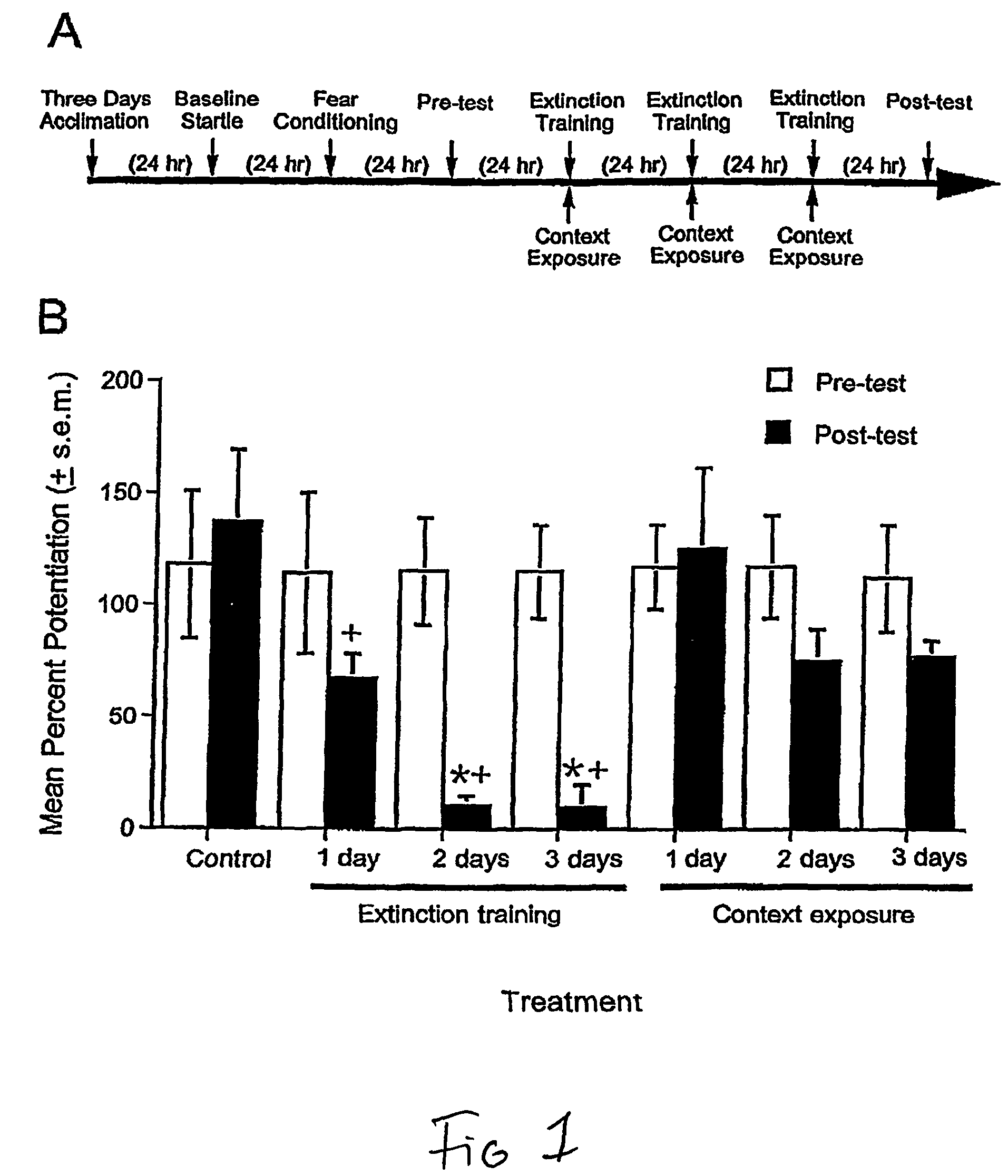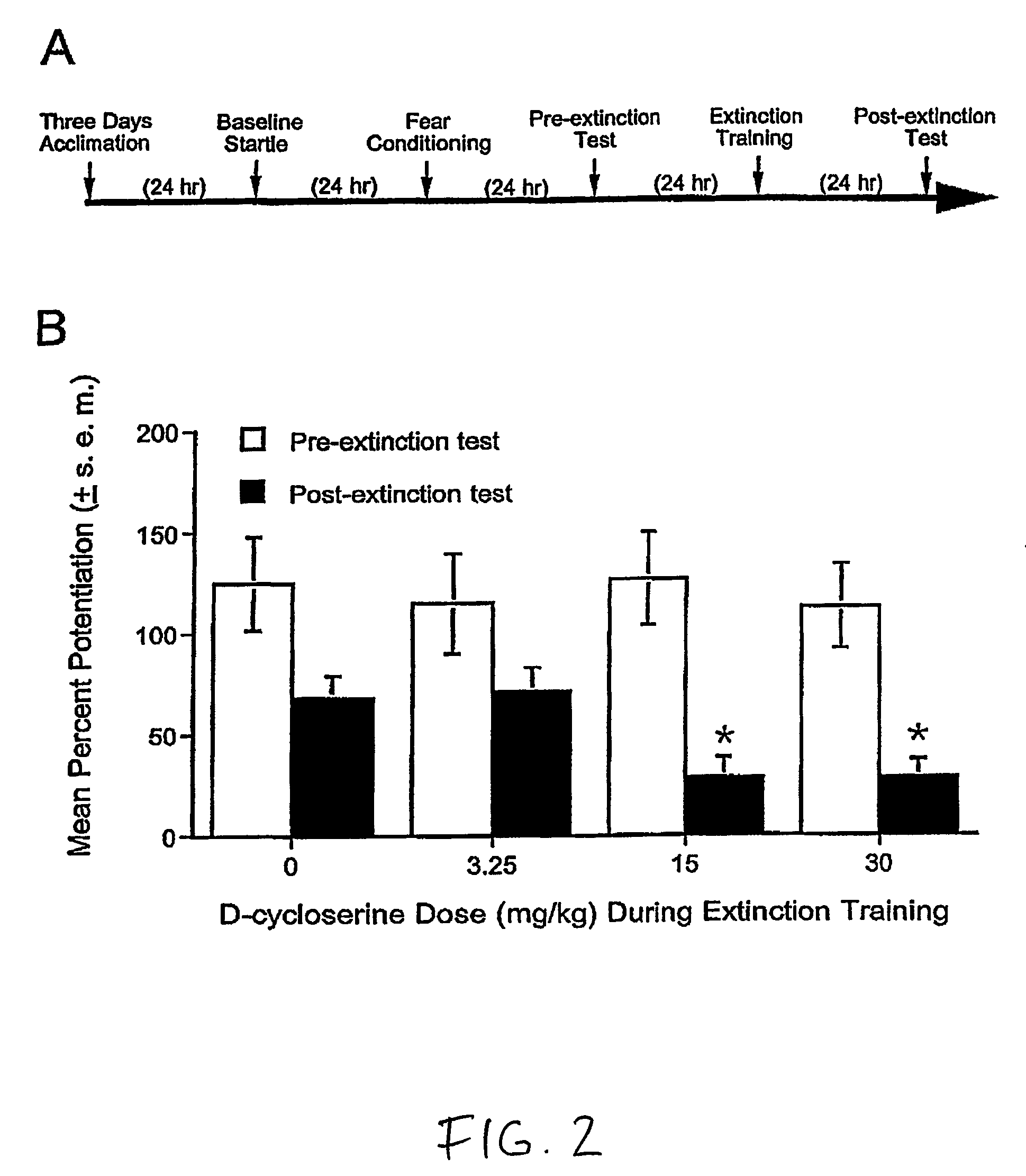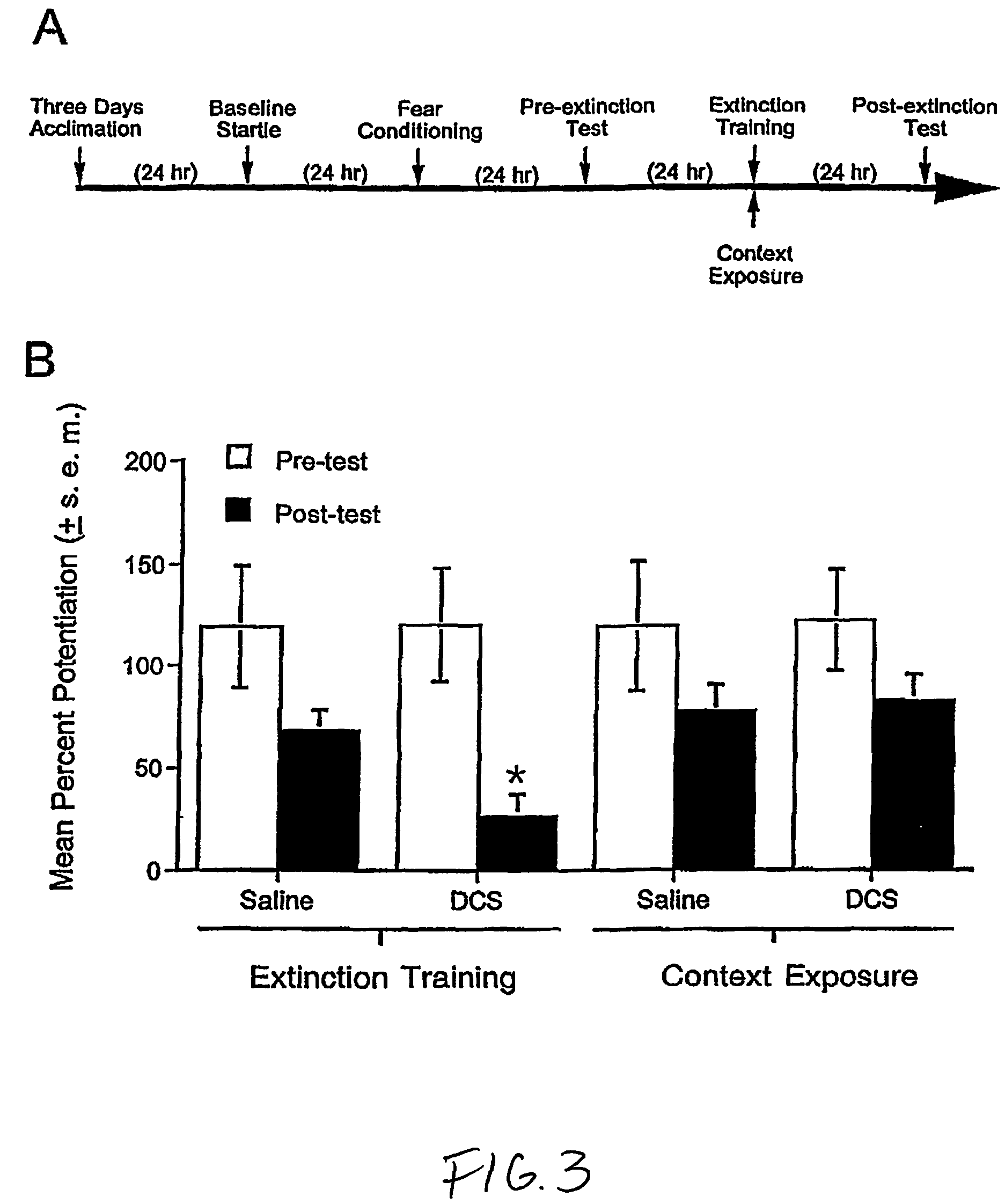Acute pharmacologic augmentation of psychotherapy with enhancers of learning or conditioning
a pharmacologic enhancement and psychotherapy technology, applied in the direction of drug compositions, biocide, heterocyclic compound active ingredients, etc., can solve the problems of reducing the use of receptor agonists in humans, and the reduction of the ability to extinguish intense fear memories, etc., to enhance extinction, increase cs-elicited fear, and facilitate extinction
- Summary
- Abstract
- Description
- Claims
- Application Information
AI Technical Summary
Benefits of technology
Problems solved by technology
Method used
Image
Examples
experiment 1
Parametric Evaluation of Different Amounts of Extinction Training
[0047]This experiment assessed the effect on fear-potentiated startle of 1, 2, or 3 days of extinction training. 42 rats were matched into 7 groups of 6 animals each based on their level of fear-potentiated startle in the pre-extinction test. Beginning 24 hrs after the pre-extinction test, rats received 1, 2, or 3 consecutive days of extinction training (30 non-reinforced light presentations per day), or 1, 2, or 3 days of exposure to the context without extinction training. An additional control group was tested 2 days after the pre-extinction test without intervening exposures to either context or the visual CS.
[0048]FIG. 1B shows that after 1 day of extinction training, fear-potentiated startle was reduced by approximately 35% compared to the pre-extinction test. After 2 or 3 days, fear-potentiated startle was reduced by approximately 90%. A two-way ANOVA with Treatment (non-reinforced CS presentations versus contex...
experiment 2
Dose-Response Function for the Effect of DCS on Extinction
[0049]Twenty-seven rats were acclimated, tested for baseline startle, fear-conditioned, and tested for fear-potentiated startle as previously described. Rats were then divided into 4 groups of 7 animals each (except the DCS 30 mg / kg where N=6] based on their pre-extinction level of fear-potentiated startle. 24 hrs later, each rat was injected with either saline or DCS (3.25, 15, or 30 mg / kg; i.p.). Thirty min later, rats received a single session of extinction training. A single extinction session was used because the results of Experiment 1 indicated that this produced a minimal amount of extinction against which a facilitatory effect of DCS could be detected. Twenty-four hours later, rats were tested for fear-potentiated startle without drug injections in order to evaluate the effect on extinction of the previous drug treatments.
[0050]DCS facilitated extinction in a dose-dependent manner (FIG. 2B). ANOVA indicated a signifi...
experiment 3
Effect of DCS in Non-Extinguished Rats
[0051]To test whether the effects of DCS reflected an augmentation of extinction per se, or reflected, instead, a disruption of fear-potentiated startle independent of extinction (e.g., a delayed effect on the expression of fear-potentiated startle 24 hours after drug administration), additional rats were tested with and without extinction training. For this experiment, 28 rats were matched into 4 groups of 7 animals each based on the pre-test. 24 hrs later, each rat was injected with either saline or DCS (15 mg / kg) and returned to its home cage until placed in the startle chamber 30 min later. Two groups (one group of saline-injected rats and one group of DCS-injected rats) underwent extinction training. Two other groups (one group of saline-injected rats and one group of DCS-injected rats) were placed into the test chamber but did not receive extinction training. 24 hrs later, all groups were tested for fear-potentiated startle without drug in...
PUM
| Property | Measurement | Unit |
|---|---|---|
| Time | aaaaa | aaaaa |
| Time | aaaaa | aaaaa |
| Time | aaaaa | aaaaa |
Abstract
Description
Claims
Application Information
 Login to View More
Login to View More - R&D
- Intellectual Property
- Life Sciences
- Materials
- Tech Scout
- Unparalleled Data Quality
- Higher Quality Content
- 60% Fewer Hallucinations
Browse by: Latest US Patents, China's latest patents, Technical Efficacy Thesaurus, Application Domain, Technology Topic, Popular Technical Reports.
© 2025 PatSnap. All rights reserved.Legal|Privacy policy|Modern Slavery Act Transparency Statement|Sitemap|About US| Contact US: help@patsnap.com



